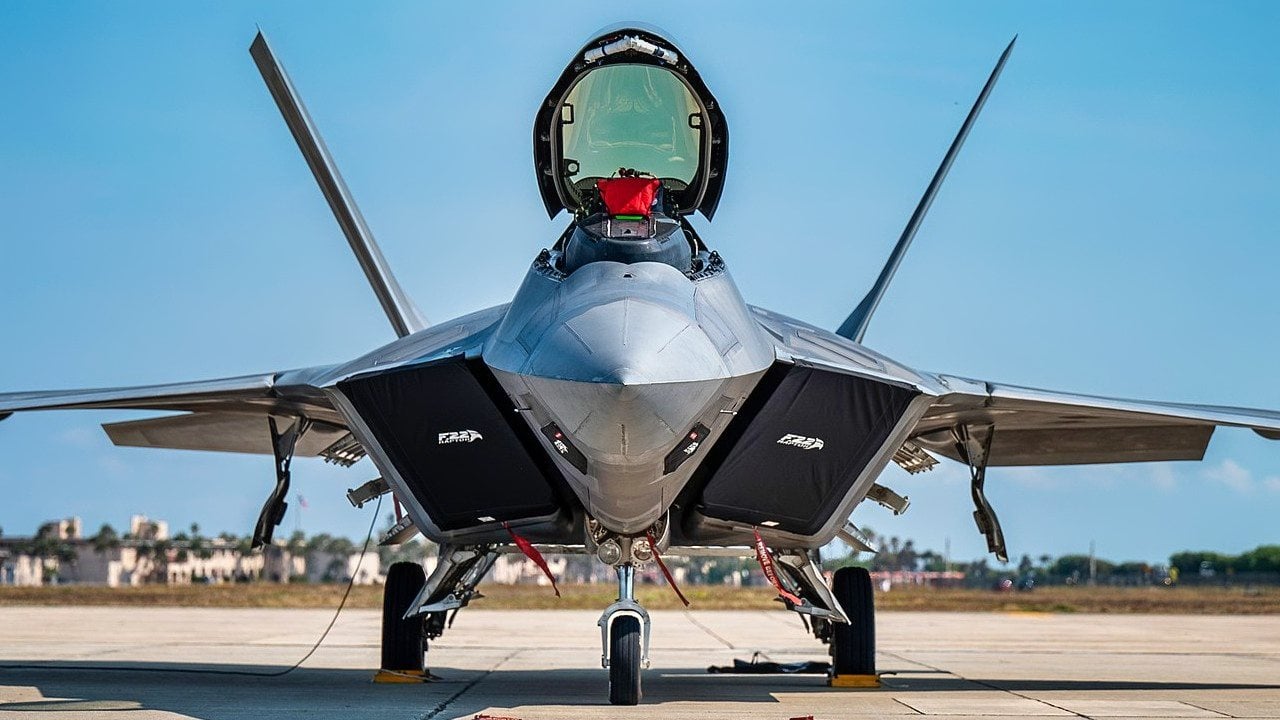Russia Is Mad: The Stealth F-22 Raptor Fighter Won't Be Retired Anytime Soon
The U.S. Congress could pass legislation that will prevent the Air Force from retiring the F-22 Raptor stealth fighter jet and will require the purchase of more F-15EX Eagle II jets.
Summary: The U.S. Congress could pass legislation that will prevent the Air Force from retiring the F-22 Raptor stealth fighter jet and will require the purchase of more F-15EX Eagle II jets.

Key Facts on F-22 You Need To Know
-The F-22, despite facing maintenance issues due to discontinued production, is still considered the best air superiority fighter.
-Congress believes maintaining the F-22 fleet is essential until the Next Generation Air Dominance (NGAD) fighter jet is ready. The F-22 excels in dogfighting with its stealth and thrust vectoring capabilities, making it crucial for air superiority.
Congress Blocks Retirement of F-22 Raptor to Maintain Air Superiority
The U.S. Congress has made up its mind. New legislation in the works if passed will prevent the Air Force from retiring the F-22 Raptor stealth fighter jet anytime soon.
The House Armed Services Committee has proposed an amendment to the Fiscal Year 2025 National Defense Authorization Act that would force the Air Force to keep the F-22 Raptor for longer in its inventory, as well as to buy more F-15EX Eagle II fighter jets.
A Congressional staffer told Defense News that the decision to block the retirement of several F-22s stems from the reality that even two decades after it started entering service, the Raptor remains the best air superiority fighter in the world.

This is no easy decision. Lockheed Martin, the manufacturing company, closed the Raptor’s production line in 2011 to dedicate resources to the F-35 Lightning II stealth fighter. As such, the F-22 fleet has faced serious maintenance issues, with a lack of spare parts forcing Air Force technicians to cannibalize older aircraft and transfuse their components to the active fleet.
Maintaining the F-22 Raptor in the air for longer will cost the Air Force several billion dollars. Nonetheless, Congress believes this is still the best option. No other aircraft can do the job the F-22 Raptor does so well.
Lockheed Martin ran the production line from 2005 to 2011, and the Air Force received 186 F-22 Raptors. Today, less than 100 of these aircraft are operational (exact numbers are classified). Indeed, the situation is so dire that the Air Force spent five years fixing a single aircraft that was damaged during a training exercise in 2018.
Although the Chinese military has been working on measures to detect and track the F-22 and other U.S. stealth aircraft, the Raptor remains the best solution for an air-to-air fight.
The Air Force plans to replace the F-22 Raptor with the Next Generation Air Dominance (NGAD) fighter jet. A sixth-generation aircraft with manned and unmanned options, the NGAD is intended to be the most advanced air superiority fighter jet in history. However, the aircraft is still some years off, and in the meantime, the Air Force will have to make do with its current fleet, including the F-22.
The F-22 Raptor
The F-22 Raptor is a fifth-generation air superiority stealth fighter jet.
What makes it particularly suited for dogfighting is the aircraft’s ability to change direction in the middle of a flight at a moment’s notice. The F-22 can do this thanks to its two-dimensional thrust vectoring capabilities and high thrust-to-weight ratio.

Although the aircraft can conduct ground attack operations, its main role is simple: Clear the airspace from enemy aircraft, thus allowing other friendly planes to take out ground and naval targets. To do so, the Raptor relies on a combination of stealth and armaments. The aircraft can also hit speeds of Mach 2 and has a range of 1,000 miles without any refueling.
About the Author
Stavros Atlamazoglou is a seasoned defense journalist specializing in special operations and a Hellenic Army veteran (national service with the 575th Marine Battalion and Army HQ). He holds a BA from the Johns Hopkins University and an MA from the Johns Hopkins’ School of Advanced International Studies (SAIS). His work has been featured in Business Insider, Sandboxx, and SOFREP.
All images are Creative Commons.


